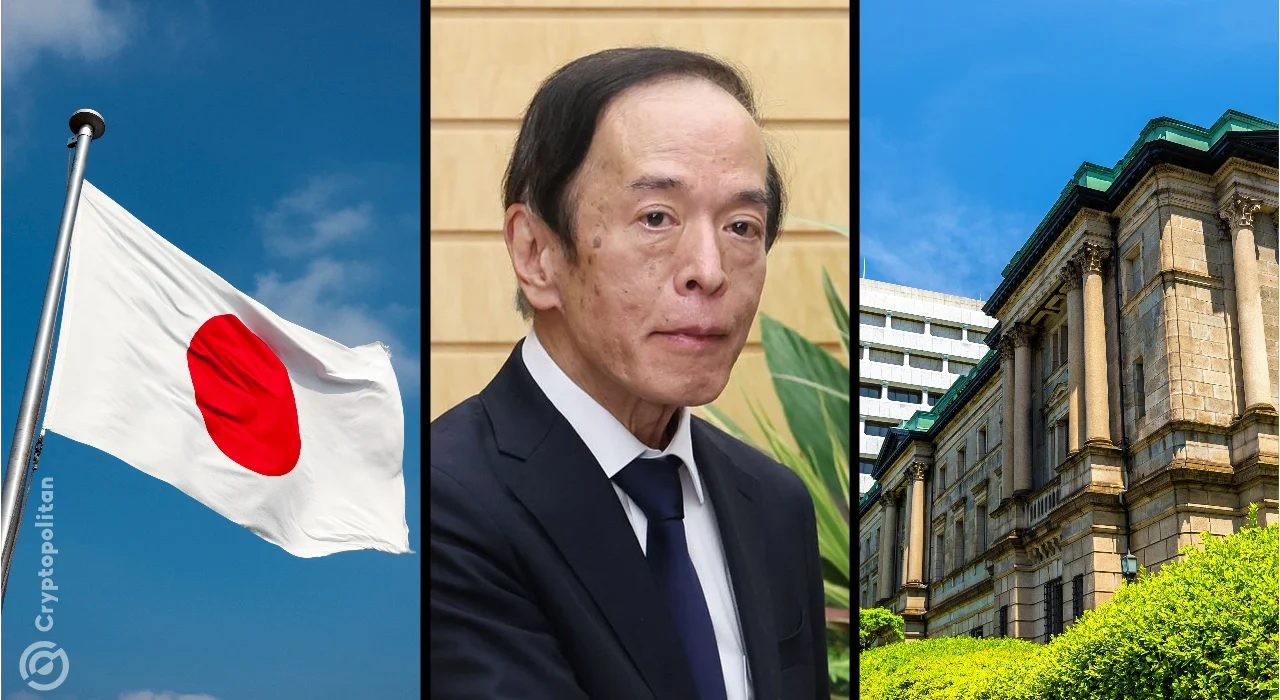Kazuo Ueda, Governor of the Bank of Japan (BoJ), has warned that artificial intelligence (AI) poses a serious threat to financial stability.
Speaking at the Europlace Financial Forum in Tokyo, Ueda zeroed in on how fast-moving technological developments, including AI, could disrupt economic systems and amplify risks.
His comments carried weight, especially with Japan scrambling to reclaim its global tech leadership while tackling its aging, shrinking population.
While Ueda’s prepared remarks avoided direct comments on monetary policy, his broader warnings about financial risks sent markets spinning. He reminded everyone that the BoJ’s approach to policy will stay data-driven. “Meeting by meeting,” he said.
No sweeping promises, just decisions grounded in fresh numbers. And with the BoJ’s December meeting just weeks away, the markets are already dissecting every word he utters.
The weak yen remains a hot topic for Ueda. The currency’s slide has been a thorn in Japan’s side, pushing up import costs and driving inflation higher.
“We seriously take into account exchange-rate movements when forming our economic and inflation outlook, including the causes behind the current currency changes,” Ueda said.
Market reactions and the yen’s struggles
Ueda’s remarks immediately affected global financial markets. The yen strengthened slightly, with the dollar dipping 0.47% to 154.65 yen. Meanwhile, yields on 5-year Japanese government bonds jumped four basis points to 0.75%, the highest since 2009.
Traders took Ueda’s comments as a potential signal for an interest rate hike at the December policy meeting. It’s all speculation for now, but the BoJ hasn’t been shy about acting decisively in the past.
The yen’s slide has been partly fueled by the dollar’s rally, itself driven by expectations that U.S. President-elect Donald Trump’s policies might keep Federal Reserve rate cuts in check. Ueda was cautious about predicting Trump’s economic impact on Japan.
“As soon as the new administration announces its policy framework, we will incorporate it into our economic outlook,” he said.
The BoJ’s recent history suggests it’s not afraid to make bold moves. After years of ultra-loose monetary policy, the bank ended its negative interest rate stance in March and bumped its short-term rate to 0.25% in July. The goal was clear: push inflation toward a stable 2%.
Ueda has made it clear that further hikes aren’t off the table, but they’ll hinge on economic data aligning with forecasts. For now, a Reuters poll shows economists split—most don’t expect another hike this year, but nearly 90% believe one is coming by March.
Japan’s $65 billion gamble on AI and semiconductors
While the BoJ debates policy, Japan’s government is throwing money at AI and semiconductor projects like never before. A massive 10-trillion-yen ($65 billion) package is on the table, directed at supercharging Japan’s tech industry.
This is survival mode. The country faces mounting economic challenges from its aging workforce and the looming threat of geopolitical instability, particularly over Taiwan—a major semiconductor hub.
Tokyo is backing projects like Rapidus, a domestic effort to create next-generation semiconductors. The government has already promised 4 trillion yen in subsidies to triple local microchip sales by 2030. It’s an attempt to future-proof Japan’s economy and reduce reliance on foreign suppliers.
Most of the world’s chips come from Taiwan, and tensions between Beijing and Taipei have everyone worried. Any disruption there could send global tech industries into chaos.
Taiwan’s chip giant TSMC opened an $8.6 billion chip factory in Japan earlier this year and is already planning another facility to produce more advanced chips.
Meanwhile, the U.S. is funneling billions into its own semiconductor projects, including $6.1 billion for Micron and $6.6 billion for TSMC’s American ventures. But there’s a catch: energy. Manufacturing semiconductors and powering AI data centers require massive amounts of electricity.
Japan, still recovering from the 2011 Fukushima disaster, is heavily dependent on fossil fuel imports. It’s trying to restart nuclear plants to fill the gap, but the road ahead is anything but smooth.
Tech giants bet big on Japan’s AI future
Global heavyweights are taking notice of Japan’s tech industry. Nvidia, in partnership with Japanese investor SoftBank, recently announced plans to build a supercomputer powered by its advanced Blackwell AI chips.
Nvidia CEO Jensen Huang called the project revolutionary, with applications ranging from AI-powered telecommunications to autonomous vehicles.
It’s not just Nvidia. Earlier this year, Microsoft doubled down on its AI investments in Japan, furthering its partnership with OpenAI. These highlight a renewed confidence in Japan’s tech ecosystem, even as the country still lags in global digital competitiveness rankings.
Japan placed 31st in a recent IMD report, a far cry from its tech dominance in the 1980s. It’s also carving out a unique space in AI regulation, with copyright laws that allow companies to train AI models on copyrighted data, even for commercial use.
Few countries have such lenient rules, and this approach is giving Japan an edge in AI development. At last year’s G7 summit in Hiroshima, the country launched an initiative to guide global conversations around AI ethics and regulation.
From Zero to Web3 Pro: Your 90-Day Career Launch Plan
